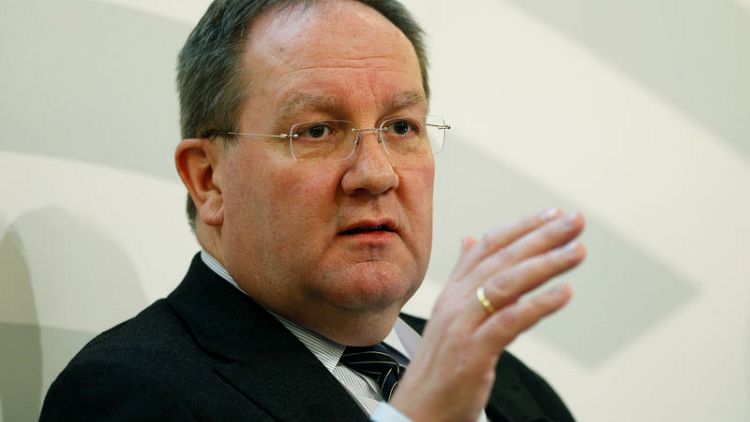FRANKFURT (Reuters) - Germany's top financial regulator warned of the dangers posed to banks by cheap money and urged them to "get real" in overhauling their businesses and axing loss-making operations.
The comments come as the nation's largest lender, Deutsche Bank, works on a plan for "tough cutbacks" to its underperforming investment bank.
Felix Hufeld, president of the Bafin financial markets watchdog, said a further reduction of interest rates - which have already been at historic lows for years after the financial crisis - would put even more pressure on banks.
European Central Bank President Mario Draghi said last week that the ECB was prepared to cut rates or restart bond purchases in the absence of a clear improvement in the inflation outlook.
Hufeld said lower rates could prompt banks to merge or change their business models. It may even force some to close, he said.
"We don't have a problem with that as supervisors," Hufeld told business journalists. "We want to make sure that it happens in a controlled way."
Hufeld urged banks to finally "get real" and shutter unprofitable business lines to shore up their balance sheets.
Resistance to doing so is one of the biggest risks to financial markets, he said, pointing also to concerns about cyber security and credit standards that may be too lax.
"Our problem in Germany is a lack of bank profitability," he said.
Some banks have held on to weak business lines in the hopes of recovery. Restructuring can also be expensive and run into opposition from strong labour protection in Germany.
Hufeld said his remarks were addressed to all banks. But Deutsche is in the throes of a restructuring that is being monitored closely by Bafin after its attempt to create a German champion through a merger with Commerzbank failed in April.
Among measures under discussion at Deutsche is the creation of a so-called bad bank to hold tens of billions of euros of non-core assets, as well as shrinking or shutting equity and rates trading businesses outside of Europe.
It also aims to cut up to a quarter of its riskiest assets in the next few years.
The measures are part of a significant restructuring of the investment bank, a major source of revenue for the lender, which has struggled to generate sustainable profits since the 2008 financial crisis.
(Reporting by Tom Sims and Hans Seidenstuecker; Editing by Keith Weir)



